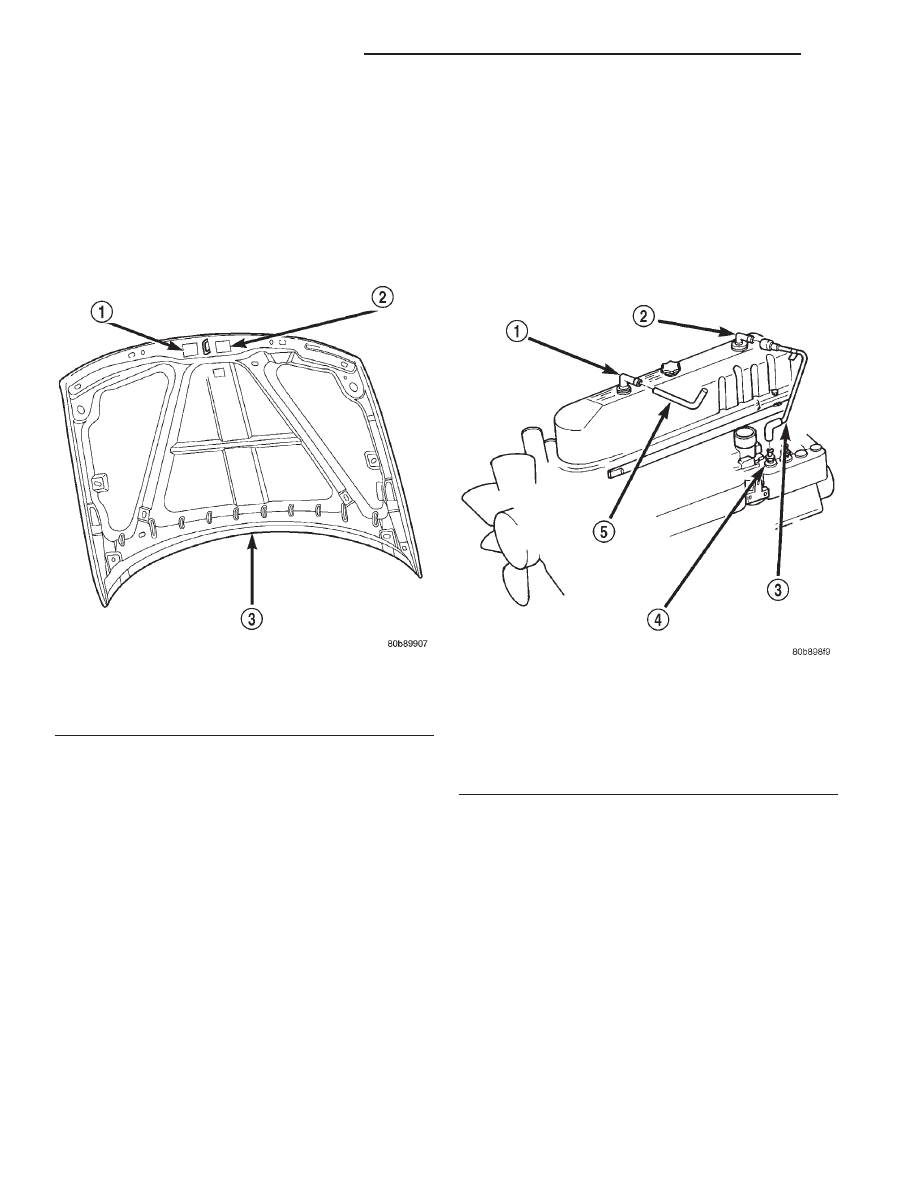Jeep Grand Cherokee WJ. Manual - part 589

VEHICLE EMISSION CONTROL INFORMATION
(VECI) LABEL
DESCRIPTION
All vehicles are equipped with a combined VECI
label(s). The label is located in the engine compart-
ment on the vehicle hood (Fig. 9). Two labels are
used for vehicles built for sale in the country of Can-
ada.
OPERATION
The VECI label(s) contain the following:
• Engine family and displacement
• Evaporative family
• Emission control system schematic
• Certification application
• Spark plug and gap
The label also contains an engine vacuum sche-
matic. There are unique labels for vehicles built for
sale in the state of California and the country of
Canada. Canadian labels are written in both the
English and French languages. These labels are per-
manently attached and cannot be removed without
defacing information and destroying label.
DIAGNOSIS AND TESTING
FIXED ORIFICE FITTING/CCV SYSTEM
TEST—4.0L ENGINE
Before attempting diagnosis, be sure locations of
fixed orifice fitting and air inlet fitting (Fig. 10) have
not been inadvertently exchanged. The fixed orifice
fitting is light grey in color and is located at rear of
valve cover. The air inlet fitting is black in color and
is located at front of valve cover.
(1) Pull fixed orifice fitting (Fig. 10) from valve
cover and leave tube attached.
(2) Start engine and bring to idle speed.
(3) If fitting is not plugged, a hissing noise will be
heard as air passes through fitting orifice. Also, a
strong vacuum should be felt with a finger placed at
fitting inlet.
(4) If vacuum is not present, remove fitting orifice
fitting from tube. Start engine. If vacuum can now be
felt, replace fixed orifice fitting. Do not attempt to
clean plastic fitting.
(5) If vacuum is still not felt at hose, check line/
hose for kinks or for obstruction. If necessary, clean
out intake manifold fitting at intake manifold. Do
this by turning a 1/4 inch drill (by hand) through the
fitting to dislodge any solid particles. Blow out the
Fig. 9 VECI Label Location
1 – VECI LABEL (CANADIAN)
2 – VECI LABEL
3 – HOOD
Fig. 10 Fixed Orifice Fitting and CCV System—4.0L
Engine
1 – AIR INLET FITTING
2 – FIXED ORIFICE FITTING
3 – CCV BREATHER TUBE (REAR)
4 – INT. MAN. FITTING
5 – CCV BREATHER TUBE (FRONT)
25 - 28
EMISSION CONTROL SYSTEMS
WJ
DESCRIPTION AND OPERATION (Continued)